
Butter vs. Oil In Baking
This post may contain affiliate links. Read our disclosure policy.
Today we’re experimenting with cupcakes and brownies to discover which is best in baking: butter or oil?
I recently revamped my Red Velvet Cake recipe. The original recipe was made with only oil as the primary fat for the cake layers. While evaluating how to improve that recipe, I decided to conduct some experiments on butter vs. oil in baking.

Fats are responsible for so many important functions in baking, such as:
- Tenderizing
- Adding the sensation of moisture
- Leavening
- Adding flavor
- Assisting in browning
- Conducting heat
- Creating creaming textures and more!
So, I got to baking and conducted side-by-side tests to see which turned out better.
The results were fairly shocking. They informed my final decision making for which fat to use in that Red Velvet Cake recipe… a decision which may surprise you! Read through this whole article to up level your baking game. There are answers to questions in here you probably never thought to ask!
Butter vs. Oil in Baking: Which is Better?
Solid vs. Liquid (Saturated vs. Unsaturated Fats):
Butter is a saturated fat which is why it’s solid at room temperature. Most baking and cooking oils are unsaturated fats such as canola oil, olive oil, and peanut oils as well as soybean, sunflower, and safflower oils (the latter three are more commonly referred to as vegetable oils).
We won’t get into the nutritional distinctions in this article, but understanding the difference between saturated and unsaturated fats can help you to understand how they’ll behave differently in baking.
Since butter is solid at room temperature, it makes a great base for many recipes which require creaming of the butter and sugar. Many cakes and cookie recipes require this creaming step to add air into the batter or dough to assist in leavening for a light and fluffy texture. This can’t be accomplished in the same way with liquid fats like vegetable oils… but the actual side-by-side results of cupcakes made with butter vs. oil shared below surprised me!
What about coconut oil vs. butter in baking?
Coconut oil is one of the rare oils that’s solid at room temperature, but it must be a cool room temperature because it will begin to melt at 78°F. Compare this to butter’s melting point which is just below human body temperature, about 90 to 95°F depending on the style and brand. Shortening’s melting point is even higher, around 117°F.
Coconut oil is solid at room temperature because it’s also a saturated fat, along with palm oil and cocoa butter.
This also means if you plan on refrigerating a baked good or serving it chilled, it may be best to opt for a liquid oil-based recipe. Butter, coconut oil, and shortening will harden and feel more greasy the colder it is when served (think of the texture of buttercream frosting on a cupcake that’s been chilled). At room temperature, butter has a melt-in-your mouth feeling and more robust flavor profile.
Liquid oil products are always liquid at room temperature and even when refrigerated, so they give the palate a sensation of moisture when you bite into something made with oil.
Butter is only about 80% fat!
The remaining 20% is mostly water with some milk solids as well as any flavoring ingredients and salt, depending on the brand and style of the butter. European-style butter has less water content, containing about 82-85% fat, depending on the style and brand.
What about shortening vs. butter?
Shortening is also a saturated fat that’s solid at room temperature. Unlike butter, it has no water content. Learn more about shortening vs. butter here.
Butter vs. Oil: Baking Experiment
To truly gauge the differences in taste and texture between baked goods made with butter vs. liquid oil, I pulled together Haley from team HTH, my food photographer Joanie, my food stylist Brendan, and culinary assistant Audrey to conduct this experiment.
We baked two batches of the same brownie recipe and two batches of the same cupcake recipe. Each control batch was made as the original recipe was written with butter. The variable batch was made with liquid oil in place of the butter.
In doing some research on replacing oil in butter recipes before embarking on this experiment, I discovered most resources recommended to slightly reduce the amount of oil. This is due to the fact that butter contains only about 80% fat. We reduced the oil in those batches by 15% compared to the original butter amount.
The results were VERY interesting and slightly unexpected. Of course the group taste tests were the best part!
Butter vs. oil in brownies:
I wanted to be sure to include a recipe experiment that called for the butter to be melted in the recipe as well as one that called for the butter to be creamed. In this brownie experiment, we simply melted the chocolate on its own and added the oil in.
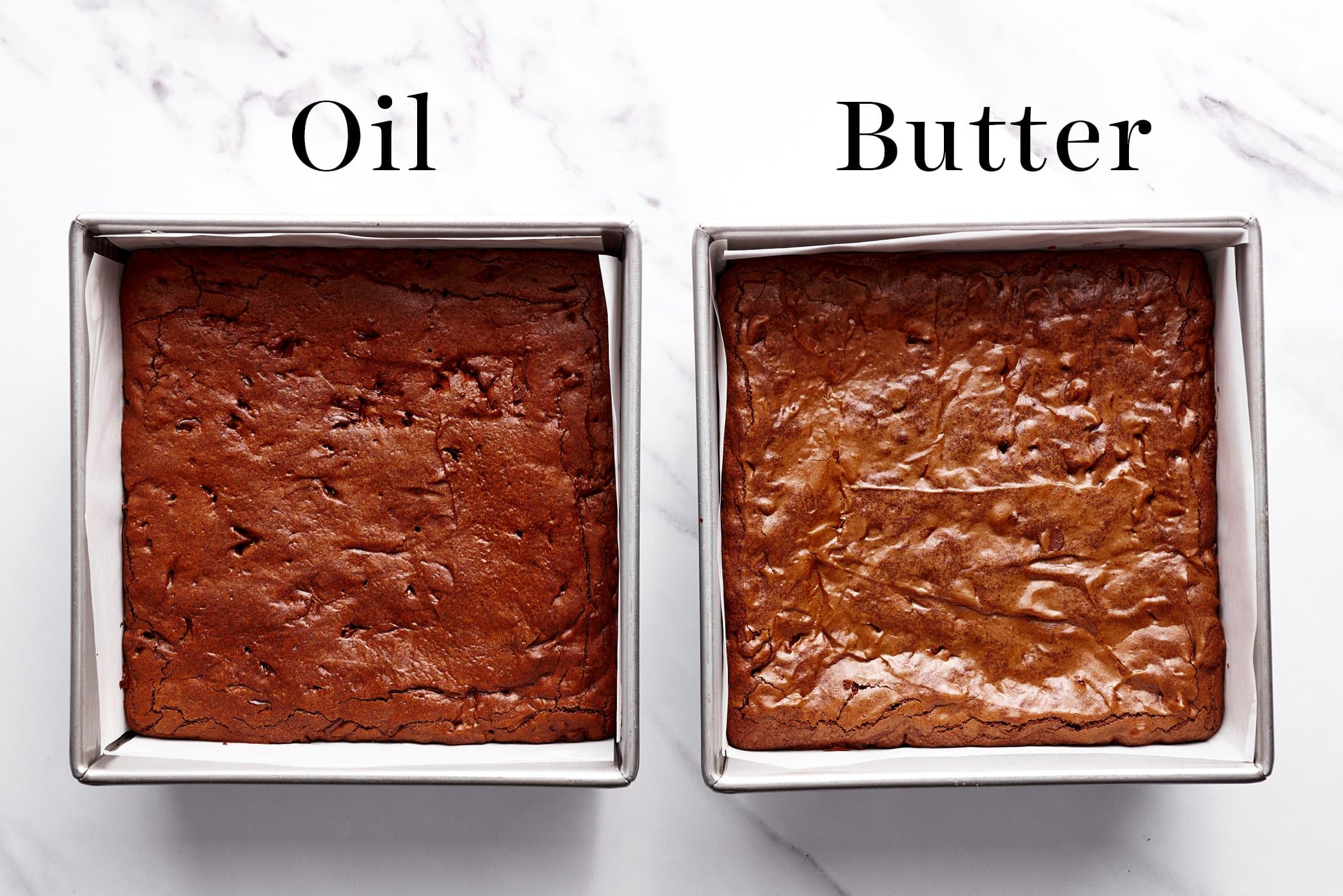


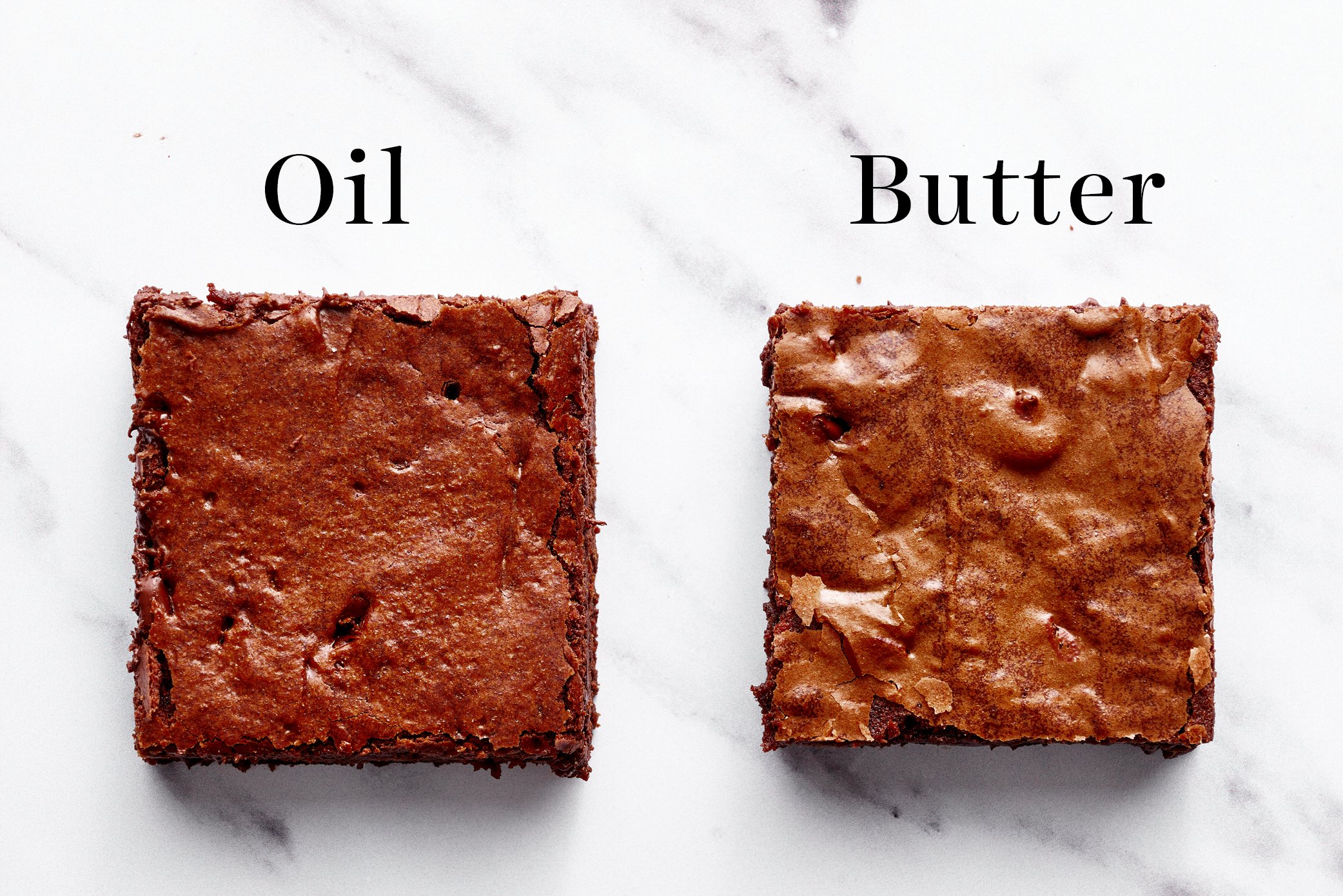
The five of us taste-tested the final brownies side-by-side and came to the following conclusions:
Oil Brownies: These were chewier with crunchier edges and a crunchier topping. They were more matte on top with a far less crinkly shiny brownie ‘skin.’ They tasted more like box mix brownies.
Butter Brownies: These were much fudgier, softer, and had a melt-in-your-mouth texture. The crust was much shinier and crinklier and the flavor was significantly better than the oil brownies.
However, as I knew from previous brownie experiments, combining the two can achieve the best of both worlds: chewiness from the oil and fudginess and flavor from the butter as seen in my popular Best Ever Chewy Brownie Recipe.
Butter vs. oil in cupcakes:
This cupcake experiment led to much more surprising results. I expected the oil cupcakes to be shorter because they wouldn’t have benefited from aeration through creaming the butter and sugar together. Instead, they were much taller! And the difference in tenderness was shocking too.

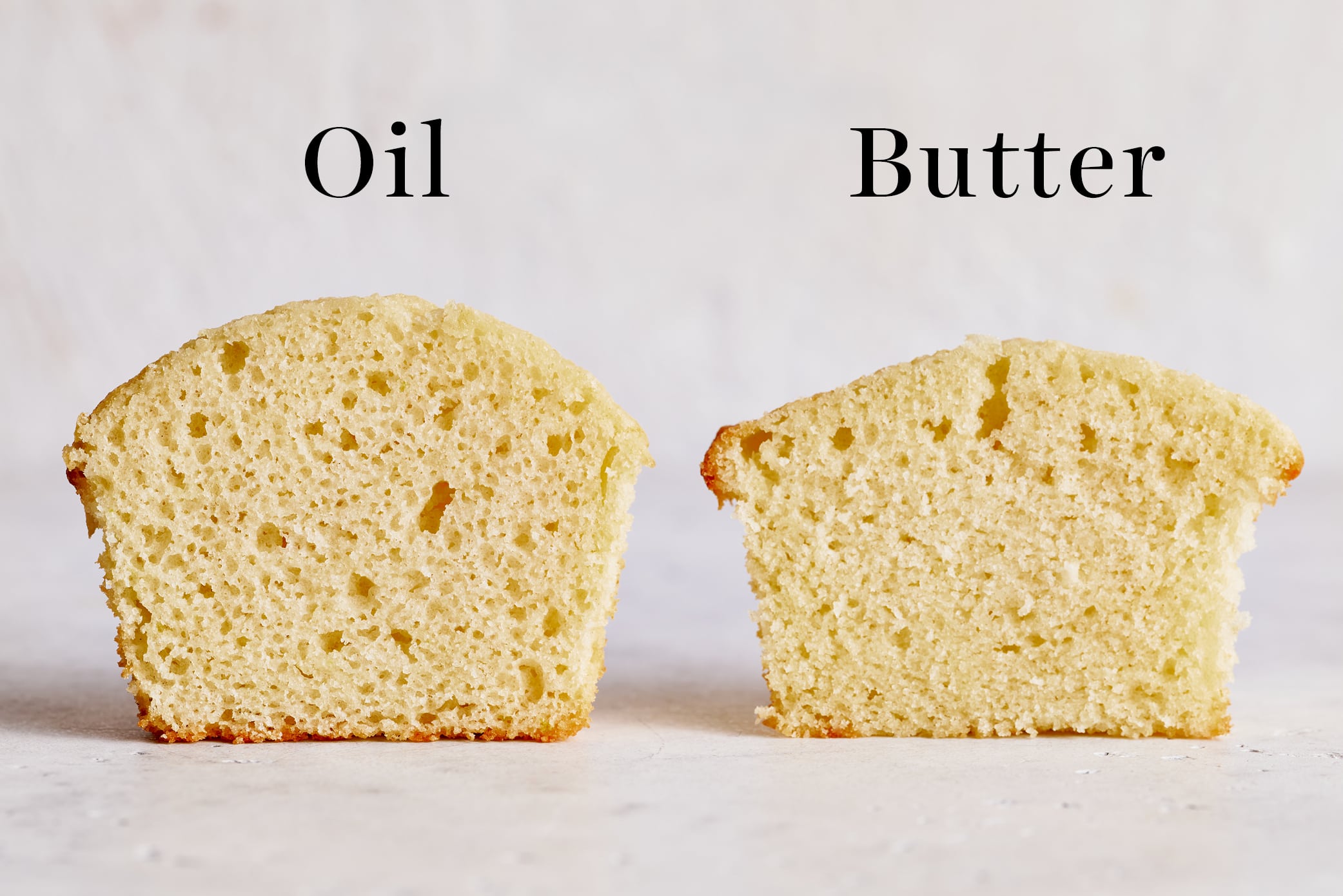
Oil Cupcakes: These were not at all crumbly or delicate and instead had a coarser crumb and more spongy texture.
Butter Cupcakes: These had way better flavor that actually allowed the vanilla extract to shine. They were significantly softer, more delicate and crumbly, and had that melt-in-your-mouth texture. The taste was smoother and generally more flavorful.
Which tastes better in baking: Butter vs. Oil
There are no surprises here: butter tastes better than oil in baking recipes.
However, in recipes with other bold flavors – such as chocolate, coffee, or citrus – butter can sometimes compete with the other flavors and this is normally when a recipe calls for oil instead. That’s why you’ll see oil used instead of butter in my Best Chocolate Cupcakes recipe, which contains chocolate, cocoa, and espresso powder.
How to substitute oil for butter in baking:
For quick-breads like banana bread or muffins, you can more easily swap in oil for the butter. As discussed above, butter is only about 80% fat whereas oil is 100% fat. To maintain the same fat level, the general rule of thumb is to reduce the amount of oil by about 15% compared to the original amount of butter called for. You can also add back in some water, about 1 ½ tablespoons per 4 ounce stick of butter.
What’s the best butter for baking?
The spongy texture and moist flavor that oil creates can be a boon to certain recipes. Not to mention oil is cheaper and easier to work with. Butter will always provide superior flavor and that melt-in-your-mouth texture.
In many recipes, combining the two gives the best of both worlds. That’s what I landed on for my Red Velvet Cake recipe!
Salted vs. Unsalted Butter for Baking
I always use unsalted butter for baking because that puts me in control of the total salt content of a recipe. Learn more about salted vs. unsalted butter here.
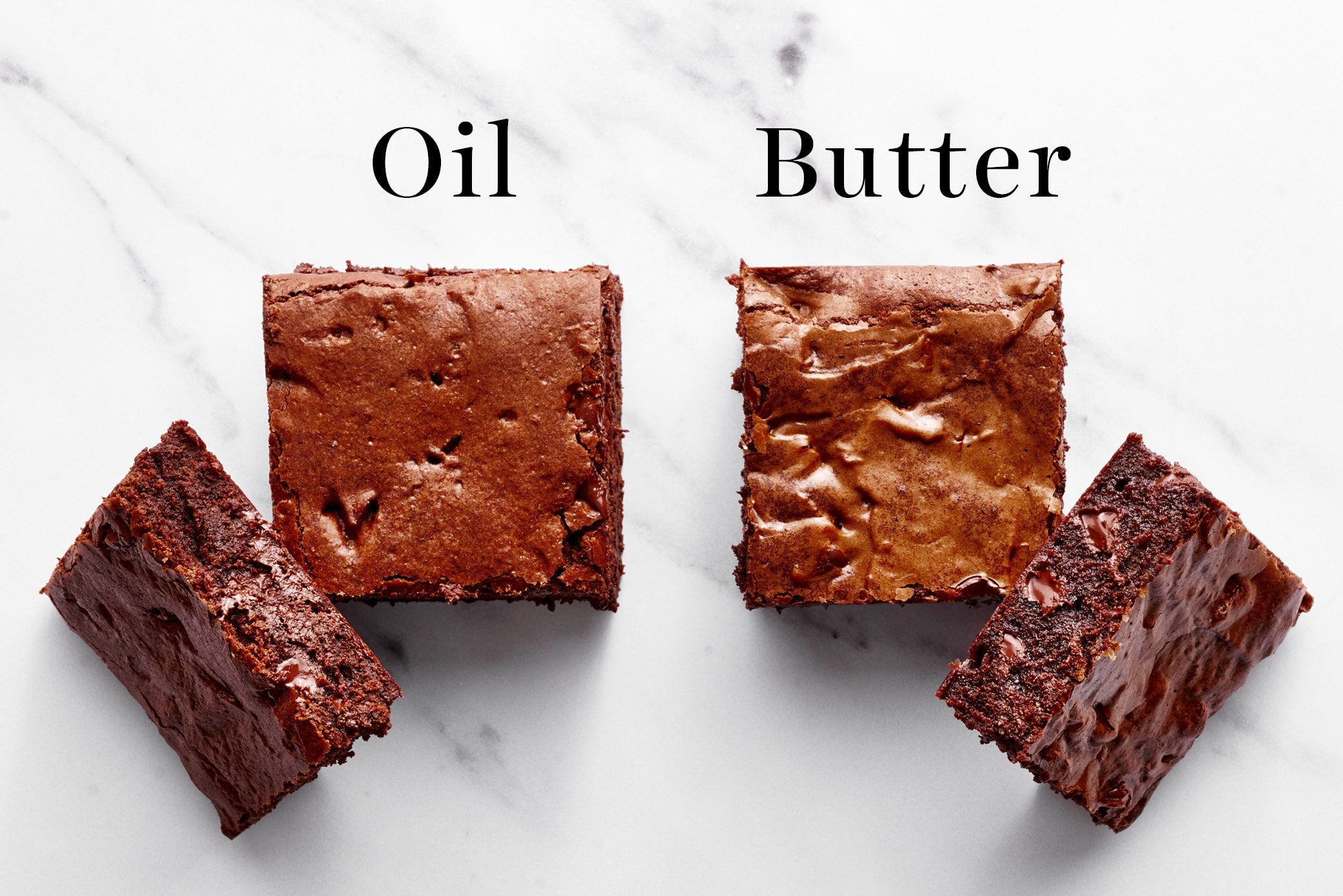
More science of baking articles to check out:
- Baking Soda Vs. Baking Powder
- How to Measure Flour
- Everything You Need to Know About Sugar in Baking
- Why I Hate Baking Substitutions
- How to Prevent Cakes and Loaves from Sinking
- Natural Cocoa vs. Dutch Process Cocoa Powder
Recipes you’ll love:
- Bakery Style Chocolate Chip Cookies
- Yellow Cupcakes
- Brown Butter Brownies
- Chocolate Cake
- Best Ever Pie Crust
Photos by Joanie Simon | The Bite Shot
About Tessa...
I share trusted baking recipes your friends will LOVE alongside insights into the science of sweets. I'm a professionally trained chef, cookbook author, and cookie queen. I love to write about all things sweet, carb-y, and homemade. I live in Phoenix, Arizona (hence the blog name!)
Leave a Comment & Rating
Add a Review or Question
© Handle the Heat - handletheheat.com
Join the Handle the Heat Community
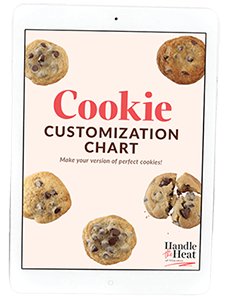
Instead of digging through cookbooks and magazines and searching the internet for amazing recipes, subscribe to Handle the Heat to receive new recipe posts delivered straight to your email inbox. You’ll get all the latest recipes, videos, kitchen tips and tricks AND my *free* Cookie Customization Guide (because I am the Cookie Queen)!

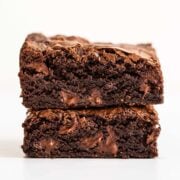

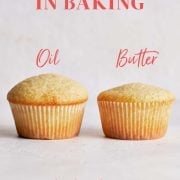
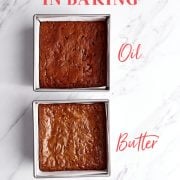
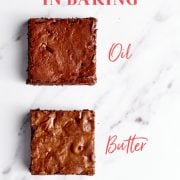

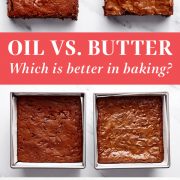



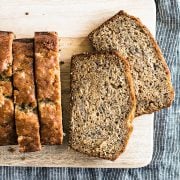
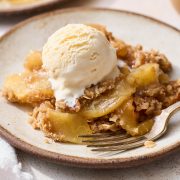
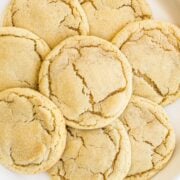
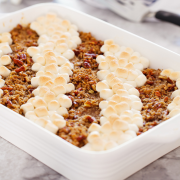

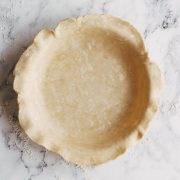
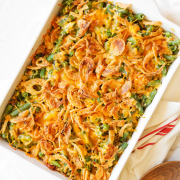
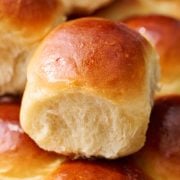
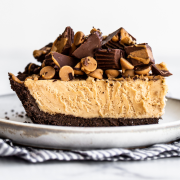

This is such a detailed and informative post! Answered all the questions I was wondering about. Thank you!
Hi! Not sure if anyone has asked this as I did not go through all the comments/questions…What about browned butter. I have a new found love for this and have been using it in more and more of my baking. The cookies are delicious, the banana bread was amazing, and the overall smell is decadent! I am going to be making a chocolate chip pumpkin bread for Thanksgiving and the recipe calls for veggie oil, but I was likely going to use browned butter. Any thoughts?
Hi Alexis! Browned butter can be SO delicious when added to baked goods, but it can be tricky to simply use instead of oil or regular butter in a recipe – and there’s not a super simple solution, unfortunately. American butter is about 80% butterfat and 20% water on average, so when you brown butter, you lose that extra moisture/water as it evaporates through the browning process. Oil, on the other hand, is 100% fat and also has other considerations Tessa mentions in the above article. It will take some experimentation to alter a recipe using oil to work with browned butter for these reasons – but it can be done, and it’s a fun experiment in the meantime 😉 Good luck and happy baking!
These posts are a really great resource. So easy to understand and with such great photos! Congrats!!
Wonderful experiment! Would you share the recipe for “oil in cupcake” above picture?
Thanks!
Hi there! I recommend checking out Tessa’s Yellow Cupcake Recipe. This recipe contains both oil and butter, for the best of both worlds. If you wish to use only oil, follow the instructions on this page for swapping oil for butter, but reverse the directions. Happy baking 🙂
I feel like ambient temperature makes a big difference to which is best. I adore butter, but I actually don’t much like it in cakes (including cupcakes). The issue may be that I mostly bake in winter (don’t really want to turn the oven on in summer), and I feel like butter cakes are MUCH harder/drier-seeming at lower room temperatures than oil ones, which are still soft and moist when cold.
Thanks so much for your thoughtful examination of butter-vs-oil. As one of the many whose body can’t handle gluten, I’m always in pursuit of a better bread recipe. Have you insights into the effect of different fats?
Hi Heather! We don’t bake with gluten free ingredients unfortunately, but we always encourage experimentation until you find what works for you! Good luck 🙂
Very helpful!
How interesting!! I love the chewiness of boxed brownies but prefer to make homemade. Which of your brownie recipes using oil do you recommend me to try? Thank you!
Hi Lisa! If you love the chewiness for boxed brownies, try our Best Ever Chewy Brownies! Tessa wrote this recipe to mimic the chewiness of boxed brownies, with a wayyyy better flavor! It uses both oil and butter, for all the benefits of both, with a gorgeous crinkly crust! Let us know if you make them – we’d love to hear what you think 🙂
If the recipe require 100 grams butter, but i want to try use some oils, what should i do?
How much butter should i reduce? How much oil should i add to replace the butter? 50 grams butter & 50 grams oil?
Hi. thank you for all this great information. I’ve been wanting to bake with European style higher fat butter, when can I use this butter? Is it interchangeable with regular unsalted butter?
Thank you
Hi Lina, great question! Hopefully someday soon here Tessa will be publishing an article on that very topic! When it comes to baking, she prefers North-American style unsalted butter and instead reserves the more expensive European butter for slathering on bread. Due to the different fat-to-water ratio in American vs. European butter, swapping out one for the other in a recipe can drastically alter the results. European butter used when not specified may lead to collapsed cakes, decreased rise in biscuits and scones, and broken toffee and candy products. That being said, European butter is excellent in pastries and laminated doughs (croissants for example). Since it has less water content, it remains solid in the oven for a longer period of time, which results in even more flaky layers :). I hope that helps!
Love this article about oil versus butter!
Thank you for all the information. I get so annoyed with chefs/cooks from the cooking shows that just scoop flour from the container and use their finger to smooth it. I have taught my granddaughter the correct method, the method you explained, and when she had a food class as an elective. told the teacher that was the incorrect way to measure flour. Then they did the experiment using the correct method and just scooping the flour and weighed it on a scale and of course the scoop method was way off.
The question I have is when a recipe calls for 1 cup flour sifted or 1 cup sifted flour. Are they the same method?
That’s so great to hear, Donna! Love that they experimented during class! Typically when a recipe calls for flour needing to be sifted, it’ll be written in the ingredients list, in either two different ways: One: “63 grams sifted flour”, or TWO: “63 grams flour, sifted”. The first starts out with flour being sifted prior to measuring, the second calls for measuring your flour first, then sifting. You can trust that with all of our recipes we will note if the flour needs to be sifted or not. I hope that helps!
Love and appreciate all your information and knowledge. Thank you so much. So many great recipes. Marie
Thank you for this experiment, it was so helpful! In my (amateur) experience I have felt that using oil has resulted in a more moist sponge and it seems to last longer as well. What is your experience with that? I will definitely keep in mind the tip about using butter in a more delicate flavored product, that makes total sense! Thank you for breaking down how to replace butter with oil as I have yet to find a clear answer for that and have often wanted to do it in some recipes. Saving this for future baking!
Hi Jan! So happy this experiment helped 🙂 We found that oil resulted in a more spongy texture, whereas butter had a more melt-in-your-mouth texture. Oil cupcakes do tend to stay moist longer and a bit more tender than butter cupcakes. Excited for you to experiment in your own kitchen!
This is such great info! Love the comparison photos. This article was so helpful!